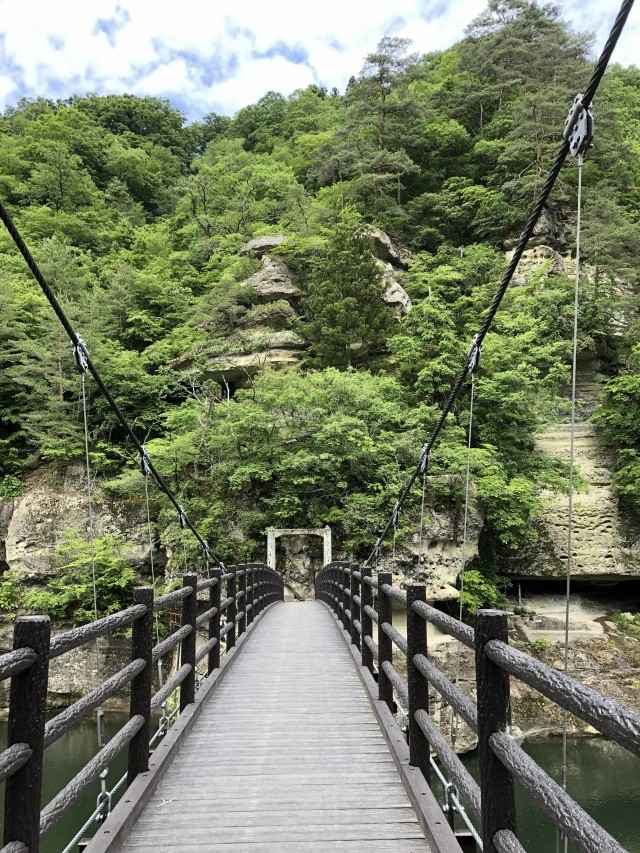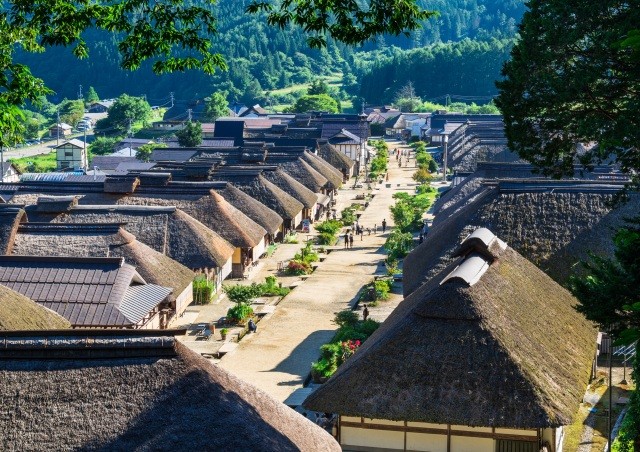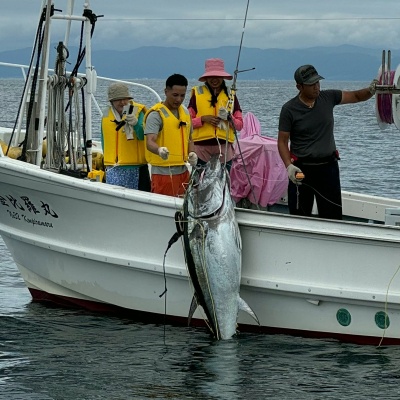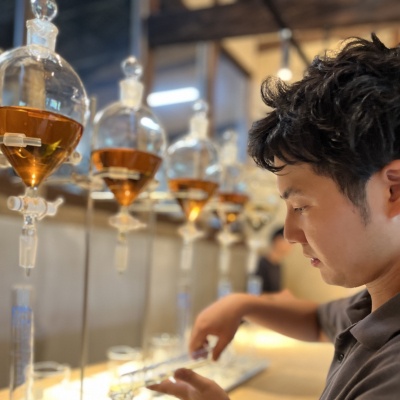Historic and nature tour of Aizu and Niigata (3 days / 2 nights)

Historic and nature tour of Aizu and Niigata (3 days / 2 nights)
START
Day1
Aizuwakamatsu Nanukamachi-dori Street
Enjoy a stroll around this nostalgic town

From JR Nanukamachi station, the 700m Nanukamachi-dori Street leads to Noguchi Hideyo Seishun-dori. The street is lined with early 20th century architecture.
Visitors can travel back in time along this street lined with shops offering traditional arts and crafts such as hand-decorated candles, Aizu lacquerware and Aizu cotton. The town rewards a lingering stroll while enjoying traditional architectural designs pleasing to the eye and sampling some of the tasty treats on offer including varieties of Japanese sweets and a number of sake breweries. A retro-style sightseeing bus “Haikara-san” offers nostalgic rides through town.
The local streets are home not only to exquisite shops but also to a number of locations related to the Shinsengumi, a special police force set up to protect Shogun in the late Edo period. They are also not far from Tsurugajo Castle, which comes alive throughout the seasons.
The Eki Café at JR Nanukamachi station functions as an information centre. Visitors can also purchase local products, arts and crafts from 17 towns and villages of the Aizu region. This cozy café is a lovely place to unwind!
Visitors can travel back in time along this street lined with shops offering traditional arts and crafts such as hand-decorated candles, Aizu lacquerware and Aizu cotton. The town rewards a lingering stroll while enjoying traditional architectural designs pleasing to the eye and sampling some of the tasty treats on offer including varieties of Japanese sweets and a number of sake breweries. A retro-style sightseeing bus “Haikara-san” offers nostalgic rides through town.
The local streets are home not only to exquisite shops but also to a number of locations related to the Shinsengumi, a special police force set up to protect Shogun in the late Edo period. They are also not far from Tsurugajo Castle, which comes alive throughout the seasons.
The Eki Café at JR Nanukamachi station functions as an information centre. Visitors can also purchase local products, arts and crafts from 17 towns and villages of the Aizu region. This cozy café is a lovely place to unwind!
Lunch in Aizu-Wakamatsu city
Aizu Sauce Katsu-don

Katsu-don is a nationally popular dish of a deep-fried pork cutlet (Tonkatsu) simmered in a dashi stock with onions and eggs and served over a bowl of rice. Aizu Sauce Katsu-don, a local specialty of the Aizu region dating back to the Taisho period, has a unique recipe. A bowl of rice is topped with shredded cabbage and Tonkatsu dipped in a special thick sauce. The crispy Tonkatsu and crunchy cabbage perfectly match the sauce-drizzled rice, satisfying both appetite and mind!
Search Restaurants
Search Restaurants
Tower of the tower
"To-no-hetsuri”, a national natural monument

To-no-hetsuri is the largest scenic spot in Okawa Hatori Prefectural Park. It was designated as a national natural monument in 1943."Hetsuri” means a cliff or steep slope along a river in the local dialect, and the name ‘Tou no Hetsuri’ comes from the meaning of a steep cliff in the shape of a pagoda.Walking through the deeply gouged rock arcade, you will see strange and monstrous rocks towering like a huge stone tower.It is a magnificent landscape created by the million-year process of erosion and weathering of the Ookawa River (Aga River).In early summer, mountain hydrangeas hang down from the strange rocks, and in autumn, the leaves turn beautiful colors.
Ouchijuku
Feel the spirit of the old townspeople of this historic town

Ouchi-juku is a former post town established around the 17th century and also registered as an Important Preservation District for Groups of Historic Buildings by the Japanese government. The streets lined with thatch-roofed houses are reminiscent of the Edo period (1603-1867), and displays showing the details of life in those times down to the utensils and hearths help visitors imagine what life was like during its heyday.
Continue down the main street where you will reach the Ichi-no-Torii (first gate), of Takakura Shrine, the village's Shinto shrine. Passing through the torii gate, you will find yourself in a quiet walking area. Climb the steps up to the shrine to find a spot with a spectacular view overlooking Ouchi-juku.
There are many souvenir stores and delicious food to eat. Not to be missed is negi soba (leek buckwheat noodles), a local delicacy eaten using sticks of leek as chopsticks. It is not only delicious but also worth a picture! Other attractive foods include tochimochi, a rice cake made by combining horse chestnut and glutinous rice, and shingoro, which looks like a dumpling and is flavored with juunen (perilla) miso.
The area is also close to To no Hetsuri, a scenic gorge designated as a National Natural Monument, making Ouchi-juku a place worth visiting.
Continue down the main street where you will reach the Ichi-no-Torii (first gate), of Takakura Shrine, the village's Shinto shrine. Passing through the torii gate, you will find yourself in a quiet walking area. Climb the steps up to the shrine to find a spot with a spectacular view overlooking Ouchi-juku.
There are many souvenir stores and delicious food to eat. Not to be missed is negi soba (leek buckwheat noodles), a local delicacy eaten using sticks of leek as chopsticks. It is not only delicious but also worth a picture! Other attractive foods include tochimochi, a rice cake made by combining horse chestnut and glutinous rice, and shingoro, which looks like a dumpling and is flavored with juunen (perilla) miso.
The area is also close to To no Hetsuri, a scenic gorge designated as a National Natural Monument, making Ouchi-juku a place worth visiting.
Higashiyama Onsen
Soak in natural surroundings on the outskirts of the samurai city of Aizuwakamatsu

Higashiyama Onsen is one of three renowned hot springs in Tohoku along with Kaminoyama Onsen and Yunohama Onsen in Yamagata. A 10-minute drive from the centre of Aizuwakamatsu, Higashiyama Onsen is situated amid a rich natural scenery of spring cherry blossoms, lush summer greenery, autumn leaves and snowy winter scenes. This Onsen town stirs nostalgic feelings thanks to its row of traditional inns along the river, a traditional shooting range and small waterfall.
Founded by the prominent Buddhist priest Gyoki in the eighth century, Higashiyama Onsen’s sulphate-infused spring water is smooth on the skin and is said to be beneficial for rheumatism, high blood pressure and skin diseases. The high-temperature hot water keeps you warm on the inside. The Onsen was beloved by writers and artists including Akiko Yosano and Yumeji Takehisa. During the Boshin War in 1868, Toshizo Hijikata, a member of the Shinsengumi came here to heal his wounds.
Close to popular attractions such as Tsuruga Castle and Aizu Bukeyashiki, Higashiyama Onsen is a perfect location to start your journey around the samurai city of Aizuwakamatsu.
A thematic journey in the Tohoku region:Hot springs
Founded by the prominent Buddhist priest Gyoki in the eighth century, Higashiyama Onsen’s sulphate-infused spring water is smooth on the skin and is said to be beneficial for rheumatism, high blood pressure and skin diseases. The high-temperature hot water keeps you warm on the inside. The Onsen was beloved by writers and artists including Akiko Yosano and Yumeji Takehisa. During the Boshin War in 1868, Toshizo Hijikata, a member of the Shinsengumi came here to heal his wounds.
Close to popular attractions such as Tsuruga Castle and Aizu Bukeyashiki, Higashiyama Onsen is a perfect location to start your journey around the samurai city of Aizuwakamatsu.
A thematic journey in the Tohoku region:Hot springs
Day2
Lunch in Kitakata city
Kitakata Ramen

Kitakata Ramen originates from the city of Kitakata in Fukushima. As many as 120 ramen restaurants are lined along the city’s streets, some of which open early in the morning offering their local customers Ramen for breakfast. This custom of eating Ramen in the morning is affectionately known as “Asa-Ra” (morning Ramen). Each restaurant has a unique style of Kitakata Ramen usually consisting of thick, flat and curly noodles with a tender slice of roasted pork served in a clear, soy sauce-based soup.
Search Restaurants
Search Restaurants
Northern Culture Museum
A residence full of traditional local aesthetics – a work of art in itself!

The Northern Culture Museum is the former residence of a local wealthy farming family. The magnificently well-preserved residence took 8 years to build and is now open to the public. The vast 29,100m2 grounds of the residence are home to the main building, a grand hall, a tearoom, a warehouse, and a wide range of artworks collected over generations, along with a promenade garden designed by an acclaimed landscape gardener.
The garden fills with a sweet fragrance when the massive Japanese wisteria vines are in bloom from late April to early May. Don’t miss the splendid view of the colourful promenade garden from the 165m2 grand hall each November – the illuminated wisterias and autumnal leaves are a fantastic sight! Along with these highlights, the garden pleases visitors throughout the year, with spring cherry blossoms, summer lotus flowers and snowy winter scenes.
The museum has a gift shop, cafés, a restaurant (reservations required) and accommodation (reservations required). Come and enjoy the local history, aesthetics and culture.
The garden fills with a sweet fragrance when the massive Japanese wisteria vines are in bloom from late April to early May. Don’t miss the splendid view of the colourful promenade garden from the 165m2 grand hall each November – the illuminated wisterias and autumnal leaves are a fantastic sight! Along with these highlights, the garden pleases visitors throughout the year, with spring cherry blossoms, summer lotus flowers and snowy winter scenes.
The museum has a gift shop, cafés, a restaurant (reservations required) and accommodation (reservations required). Come and enjoy the local history, aesthetics and culture.
Toki Messe (Niigata Convention Centre)
A convention centre on the Niigata waterfront

Toki Messe is a convention centre located at the mouth of the Shinano River meeting the Sea of Japan. Architecturally resembling an ocean liner, the urban building is a highlight of Niigata’s waterfront.
The convention centre consists of a large, well-equipped exhibition hall, a variety of 13 conference rooms and an on-site hotel. It offers the perfect facilities to host conferences and parties including accommodation for guests and attendees.
On the 31st floor of the Bandaijima Building, the Befco Bakauke Observatory Room rises 125 metres above ground level and is the highest building along the Sea of Japan. Visitors can enjoy a 360° panoramic view of Niigata City, along with the Sea of Japan, Sado Island and the Gozu Mountains. Admission to the observatory is free.
The information desk at the convention centre has a wide range of brochures available and is the perfect place to plan your journey around Niigata.
The convention centre consists of a large, well-equipped exhibition hall, a variety of 13 conference rooms and an on-site hotel. It offers the perfect facilities to host conferences and parties including accommodation for guests and attendees.
On the 31st floor of the Bandaijima Building, the Befco Bakauke Observatory Room rises 125 metres above ground level and is the highest building along the Sea of Japan. Visitors can enjoy a 360° panoramic view of Niigata City, along with the Sea of Japan, Sado Island and the Gozu Mountains. Admission to the observatory is free.
The information desk at the convention centre has a wide range of brochures available and is the perfect place to plan your journey around Niigata.
Bandai Bridge
Niigata's iconic bridge standing majestically over the Shinano River

The Bandai Bridge is a solid stone arch bridge crossing over the Shinano River. Decorations within the granite give the bridge a majestic appearance.
The current bridge is the third incarnation that was reconstructed in 1929 for the city’s modernisation. The Bandai Bridge was designated an Important Cultural Property in July 2004. Following Tokyo’s Nihonbashi Bridge, this was the second bridge on the national highway designated as an Important Cultural Property. The bridge is 306.9 metres long and 22 metres wide and survived the 1964 Niigata Earthquake. It provides an important transportation link for the local citizens.
The bridge has a broad pedestrian walkway and is best viewed from the promenades along the Shinano River. Take a stroll along one of the promenades or board the waterbus to really enjoy the view of this grand bridge!
The current bridge is the third incarnation that was reconstructed in 1929 for the city’s modernisation. The Bandai Bridge was designated an Important Cultural Property in July 2004. Following Tokyo’s Nihonbashi Bridge, this was the second bridge on the national highway designated as an Important Cultural Property. The bridge is 306.9 metres long and 22 metres wide and survived the 1964 Niigata Earthquake. It provides an important transportation link for the local citizens.
The bridge has a broad pedestrian walkway and is best viewed from the promenades along the Shinano River. Take a stroll along one of the promenades or board the waterbus to really enjoy the view of this grand bridge!
Yahiko Onsen
A hot spring area that prospered as the gateway to Yahiko Shrine

This hot spring area stands at the gateway to Yahiko Shrine, which is known affectionately by locals as “O-Yahiko-sama.”Yahiko Hot Spring area comprises two source springs, the Sakurai area spring that boasts a vigorous flow of spring water and the Yujinja spring that was newly opened in 2007, both of which have their own individual properties and effects.At “Omotenashi Plaza” and “Yunowa” in front of JR Yahiko Station there are footbaths that are 100% sourced from the Yujinja spring.
Day3
Yahiko Shrine
The most famous sacred site in Niigata

With a history stretching back 2,400 years, the Yahiko Shrine has been worshipped since ancient times. During the New Year celebrations a quarter of a million visitors come here to pray for good fortune and health for the coming year.
A 10-minute walk from JR Yahiko station takes you to the grove of Yahiko Shrine. As the shrine is popular for its sacred energy and exhilarating scenery, an early morning visit is recommended to fully appreciate its spiritual energy.
There is a unique stone known as a fortune-teller on site. Lift the stone while making a wish and if you feel the stone is light, your wish will come true. If the stone feels heavy however, your wish may not come true. Try it out on your visit for a unique experience!
A further 10-minute walk from the main shrine takes you to the base station of the Yahikoyama Ropeway. Take the ropeway up to the top station to visit Okusha – part of the shrine complex – from which a spectacular view of the surrounding countryside can be enjoyed.
A 10-minute walk from JR Yahiko station takes you to the grove of Yahiko Shrine. As the shrine is popular for its sacred energy and exhilarating scenery, an early morning visit is recommended to fully appreciate its spiritual energy.
There is a unique stone known as a fortune-teller on site. Lift the stone while making a wish and if you feel the stone is light, your wish will come true. If the stone feels heavy however, your wish may not come true. Try it out on your visit for a unique experience!
A further 10-minute walk from the main shrine takes you to the base station of the Yahikoyama Ropeway. Take the ropeway up to the top station to visit Okusha – part of the shrine complex – from which a spectacular view of the surrounding countryside can be enjoyed.
Mount Yahiko
A sacred mountain as high as the Tokyo Skytree, suitable for hikers of all abilities

Mount Yahiko rises 634 metres above the ground – as high as the Tokyo Skytree – and is a popular location for hikers of all levels. The walking trail starts 15 minutes’ walk from Yahiko station and it takes about 90 minutes to walk to the top of the mountain. The top is also accessible by the Yahikoyama Ropeway or by car via the Yahikoyama Skyline. The mountain trails are well maintained and an easy walk even for children. The mountain ropeway is also available if you would prefer to climb one-way.
At Yahiko Sancho Park located at the top of Mount Yahiko visitors can enjoy a stunning view of the Echigo Plains and the Sea of Japan from the restaurant or the Panorama Tower featuring a 360° rotating observation room. The night view from here has been selected as one of the 100 most beautiful night views in Japan, the view of the Echigo Plains under the starry night sky is spectacular!
The Okusha of Yahiko Shrine located atop Mount Yahiko has been used to worship Mount Yahiko since ancient times. Breathe the fresh air at this shrine and feel its sacred energy.
At Yahiko Sancho Park located at the top of Mount Yahiko visitors can enjoy a stunning view of the Echigo Plains and the Sea of Japan from the restaurant or the Panorama Tower featuring a 360° rotating observation room. The night view from here has been selected as one of the 100 most beautiful night views in Japan, the view of the Echigo Plains under the starry night sky is spectacular!
The Okusha of Yahiko Shrine located atop Mount Yahiko has been used to worship Mount Yahiko since ancient times. Breathe the fresh air at this shrine and feel its sacred energy.
Lunch at a JR Echigo-Yuzawa station restaurant
Mount Hakkai Ropeway and Observatory
A magnificent 360° panoramic view from the top of Mount Hakkai

Mount Hakkai has been worshipped as a spiritual mountain since ancient times. It is the local area’s most popular place to enjoy autumn leaves. Mount Hakkai has been selected as one of the 200 most famous Japanese mountains and is known as one of the Echigo Sanzan (Three Mountains of Echigo) along with Mount Echigo-Komagatake and Mount Nakanodake.
The 5-minute ropeway ride travels through beautiful scenery up to the station at the top of Mount Hakkai. A further 5-minute walk takes you to the Mount Hakkai Observatory where you can enjoy a 360° panoramic view. On fine days the view extends as far as the distant mountains of Joshinetsu, the Sea of Japan and Sado Island.
Come and enjoy the breath-taking seasonal scenery from spring greens blanketed in the remains of the winter snow to the verdant greens under blue summer skies, autumnal colours and pure white winter mountain scenes.
The best time to climb the Hakkai Moutains is between June and November. The highest peak is Mount Nyudodake at 1,778m above sea level where a mountain hut is available to take a break. Although the mountain trails are mainly suited for advanced climbers, trekkers of all levels can take the ropeway to the forth station of Mount Hakkai and enjoy the mountain-top paths.
The 5-minute ropeway ride travels through beautiful scenery up to the station at the top of Mount Hakkai. A further 5-minute walk takes you to the Mount Hakkai Observatory where you can enjoy a 360° panoramic view. On fine days the view extends as far as the distant mountains of Joshinetsu, the Sea of Japan and Sado Island.
Come and enjoy the breath-taking seasonal scenery from spring greens blanketed in the remains of the winter snow to the verdant greens under blue summer skies, autumnal colours and pure white winter mountain scenes.
The best time to climb the Hakkai Moutains is between June and November. The highest peak is Mount Nyudodake at 1,778m above sea level where a mountain hut is available to take a break. Although the mountain trails are mainly suited for advanced climbers, trekkers of all levels can take the ropeway to the forth station of Mount Hakkai and enjoy the mountain-top paths.
GOAL










